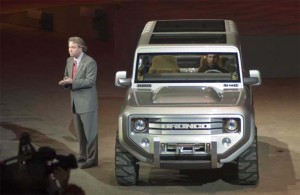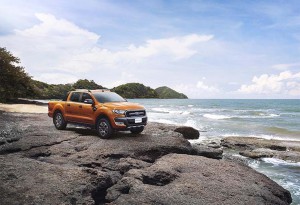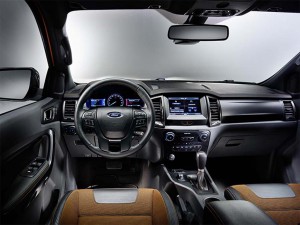New contract, new products. As part of its agreement with the United Auto Workers Union, Ford Motor Co. will invest $9 billion in its U.S. operations and, among other things, that will mean the return of two old nameplates: the Ranger and the Bronco.
It also means that the big Michigan Assembly Plant in the Detroit suburb of Wayne will remain fully operational – something that was far from certain after Ford’s prior announcement that it would be moving several models out of that plant and down to Mexico.
Ford’s four-year contract has yet to win ratification, and UAW members have shown a testiness this year that led to the defeat of an initial contract from Fiat Chrysler. Skilled trades workers also rejected their tentative contract at General Motors. But the Ford offer appears to be the most lucrative of any from Detroit’s Big Three and, with the thumbs-up of plant leaders, it could win strong rank-and-file approval.
And, if it does, a variety of new products will be rolling out of plants manned by the 52,700 UAW workers in the U.S. That includes the likely return of the Ranger and Bronco.
The midsize pickup was long a staple of the Ford line-up. But it was pulled from production in 2011, a victim of declining sales and new federal safety rules that would’ve required a major product update. Ford executives were betting that the midsize truck segment would continue to decline – as it had for the last three decades – and that they could continue moving potential buyers over to the bigger and more profitable F-150.
They didn’t count on General Motors which had also scrapped its two midsize offerings, the Chevrolet Colorado and the GMC Canyon. GM brought both back last year to rave reviews and a sharp upturn in sales that has many analysts betting the midsize pickup market is ripe for revival.
(Ford seals deal with new product guarantees. For more, Click Here.)
Competition is now expected to heat up according to analysts such as Stephanie Brinley of IHS Automotive. Toyota has seen a big surge in demand this year, just as it gets ready to launch a new version of its own Tacoma model. Nissan, meanwhile, is working up a remake of its Frontier pickup.
While Ford has a new version of the Ranger that it markets in many parts of the world, the question is just how much of a change will need to be brought to North America. In current form, CEO Mark Fields previously told TheDetroitBureau.com, the global version is too expensive to produce in order to generate a profit while also maintaining a reasonable gap between a U.S. Ranger and the well-established F-Series.
How Ford will lower production costs is uncertain but it could mean “de-contenting” the American Ranger. The richer design and higher content overseas wasn’t a problem because global demand for the full-size F-Series is minimal, the truck too large for most foreign markets.
As for the Ford Bronco, Chairman Bill Ford Jr. gave a hint of what it could look like a few years back in concept form.
(Click Here for details about Ford’s plans to expand product line-up in Middle East and Africa by 2020.)
The Ford Bronco was once a leader in the sport-utility segment but was replaced by more car-like models, such as the Ford Explorer. A new Bronco, sources suggest, would be roughly the size of the latest Explorer, but instead of riding on a car-like crossover platform it would share the chassis of the new Ranger pickup.
The U.S. market has strongly shifted away from classic body-on-frame utility vehicles in favor of car-based crossovers. But, as with the move away from midsize pickups, that may have been an over-reaction. Ford apparently believes there’s still a market for a more rugged ute like Bronco.
Ford has yet to provide formal details of the product program it will undertake as part of the new UAW contract. And there are a number of uncertainties, including future plans for the slow-selling Taurus model now built at a suburban Chicago assembly line.
(To see more about Ford’s 128% increase in Q3 earnings, Click Here.)
But barring a big surprise, Bronco and Ranger should soon be rolling out of the Wayne Assembly Plant.



